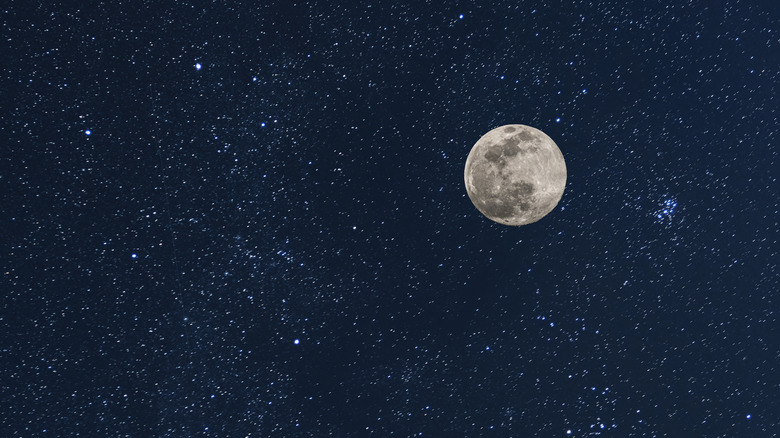Why It's Impossible For A Moon To Be Bigger Than Its Planet
Have you ever noticed that the Moon looks bigger when it's nearest to the horizon? Although it might seem as though the Moon is closer at that point, it's only an optical illusion. The Moon illusion, as it's known, is a trick of the mind that scientists can't explain, but it can make you feel like the Moon is nearly as big as the Earth itself. In reality, though, the Moon is just a little less than one-third of the diameter of the Earth and a mere 1.2% of the Earth's mass. That's not very much, but it's actually pushing the limits of how large a moon can be in relation to its planet.
It is impossible for a moon to exceed the mass of its planet because the definition of a moon is an object of smaller mass orbiting a planet. The more mass an object has, the more gravitational pull it exerts on its surroundings, so if the Moon was more massive than Earth, we would revolve around it, not the other way around. That said, Earth's moon is notably large in comparison to its parent. The only other one of the inner planets with a moon is Mars, which has two, but they are just tiny asteroid fragments. Earth's moon is so large that, even though its gravitational force is far weaker than that of the planet, it is still strong enough to have an effect on Earth's tides. Earth's moon is critical to life on our planet, but as far as moons go, that's almost as big as they come.
How big can a moon get?
A moon cannot exceed the mass of its parent planet, but how close can it get? As of now, the largest known moon in relation to its parent is Charon, the largest moon of the dwarf planet Pluto. Unique among the many strange moons of the solar system, Charon is approximately half the size of Pluto, and its mass has an even greater effect on Pluto than the Moon does on Earth. The gravitational forces between Charon and Pluto have caused the two to fall into a synchronized orbit, in which they always show the same face to each other. In contrast, the Moon always shows the same face to Earth, but not vice versa.
The largest moon in the solar system is Ganymede, one of the moons of Jupiter. Ganymede is larger than the planet Mercury, and it is the only moon known to have its own magnetic field. The existence of moons as large as Ganymede raises an interesting question: Can moons have moons of their own? Theoretically, it is possible, and scientists have proposed calling these moons of moons either "submoons" or "moonmoons". For a moonmoon to exist, it would need to be perfectly located close enough to its parent moon to stay in orbit, but far enough from its parent moon's planet to not get pulled away by the larger celestial body.

